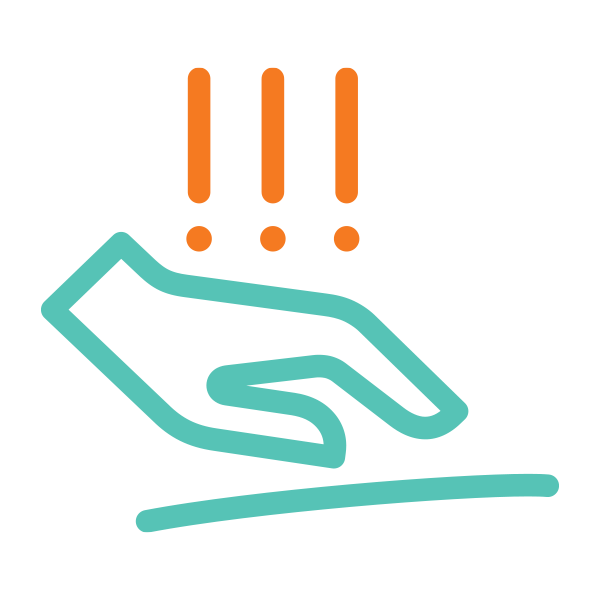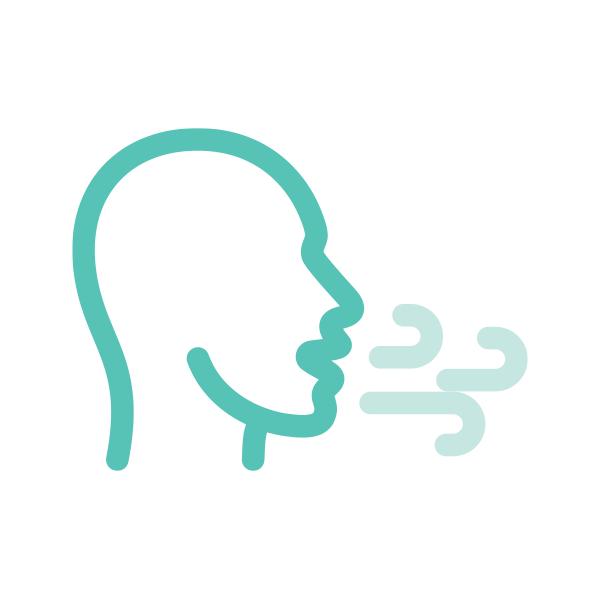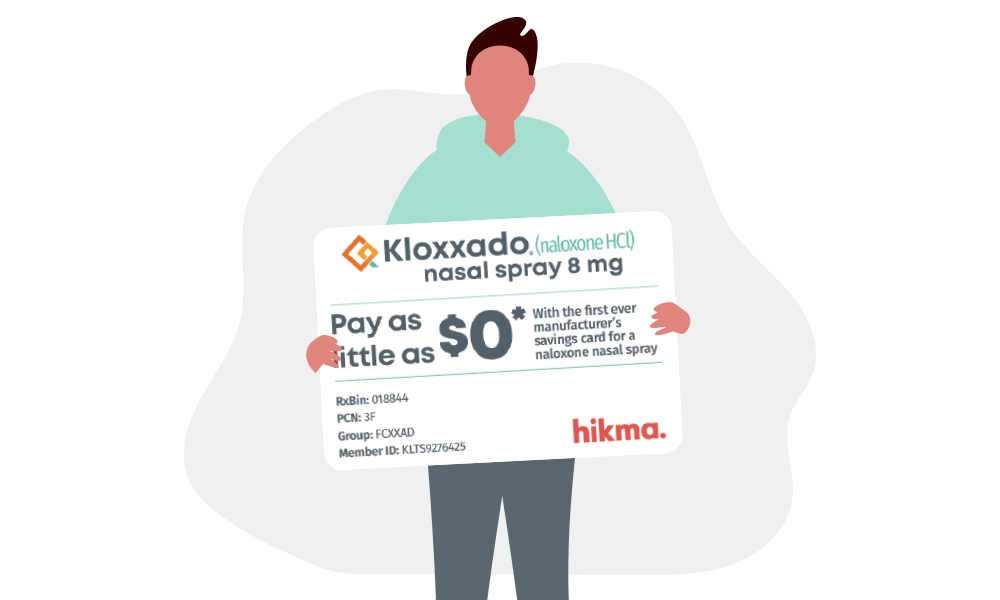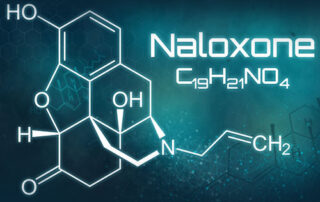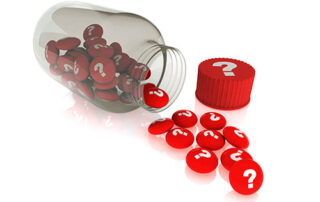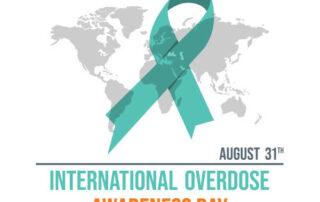What is an accidental opioid overdose?
An opioid overdose happens when the body has been overloaded with either a medication or an illicit opioid.1
Accidents can lead to overdoses because while opioids affect the nerves that feel pain, they also affect the nerves that control breathing.2 If this slows breathing too much, a person can fall unconscious, experience a coma, brain damage, or die.2
It only takes 4 minutes
Permanent brain damage can occur within four minutes of oxygen deprivation.3
Accidental opioid overdose is more common than you think4
Accidental drug overdose is the leading cause of accidental death in the US.; most of these involve opioids.4
Opioid medications used for pain are generally safe when taken for a short time and accounting for your own risk factors as prescribed by a doctor.2 But accidents can happen. You could accidentally take more than recommended. Your medicines may interact in ways you didn’t expect. You may have a medical condition that puts you at more risk than you thought. Someone could get into your medicine cabinet.
The bottom line: accidents happen
Just like you wear your seatbelt and keep a fire extinguisher in your home, having Kloxxado® (naloxone HCl) nasal spray 8 mg in your first aid kit is a simple safety measure that could save your life.5
Let your household members and friends know where to find Kloxxado® so they can help you in case of an emergency.

How to recognize an opioid overdose emergency
During an opioid overdose breathing can decline drastically or stop, causing brain damage and death.1 Check for the following signs of an opioid overdose so you can act fast:1
Take control of your safety. Talk to your doctor about your risk factors. Be ready with Kloxxado®.
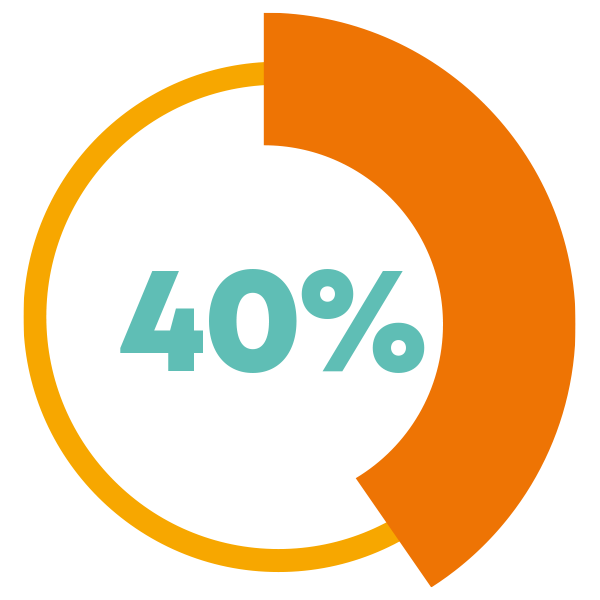
A bystander was present for nearly 40% of fatal overdoses.6
Take action right away
Take action if you suspect an opioid overdose emergency, even if you’re not sure.1 It could save someone’s life.

Kloxxado® vs Narcan®
During an opioid overdose, every minute matters.* Kloxxado® contains twice as much naloxone per dose.†‡
*Non-Fatal Opioid Overdose and Associated Health Outcomes: Final Summary Report. ASPE website. Available at: https://aspe.hhs.gov/sites/default/files/migrated_legacy_files//190846/Nonfatal.pdf. Accessed June 25, 2023.
† NARCAN® (naloxone HCl) Nasal Spray [prescribing information]. Plymouth Meeting, PA: Emergent BioSolutions Inc., 2020
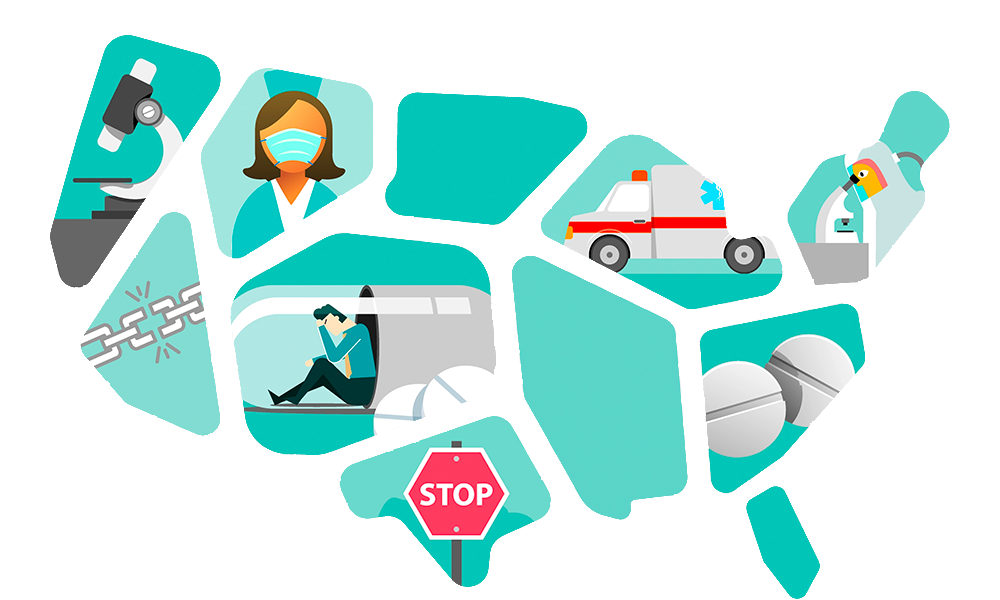
The Opioid Epidemic
With the spread of illegally-made, synthetic opioids like fentanyl, overdose deaths have grown across ages, races, ethnicities and communities.*†
*Drug Overdose Deaths Among Persons Aged 10-19 Years - United States, July 2019-December 2021.
†Drug Overdose Deaths Rise, Disparities Widen. Centers for Disease Control and Prevention website. Available at: https://www.cdc.gov/vitalsigns/overdose-death-disparities/index.html. Accessed June 25, 2023.

Facts About Fentanyl
Extremely potent, illegally-made synthetic opioids such as fentanyl and carfentanil are the most common drugs involved in overdose deaths in the United States.*
* Fentanyl Facts. Centers for Disease Control and Prevention website. Available at: https://www.cdc.gov/stopoverdose/fentanyl/index.html. Accessed March 21, 2023.
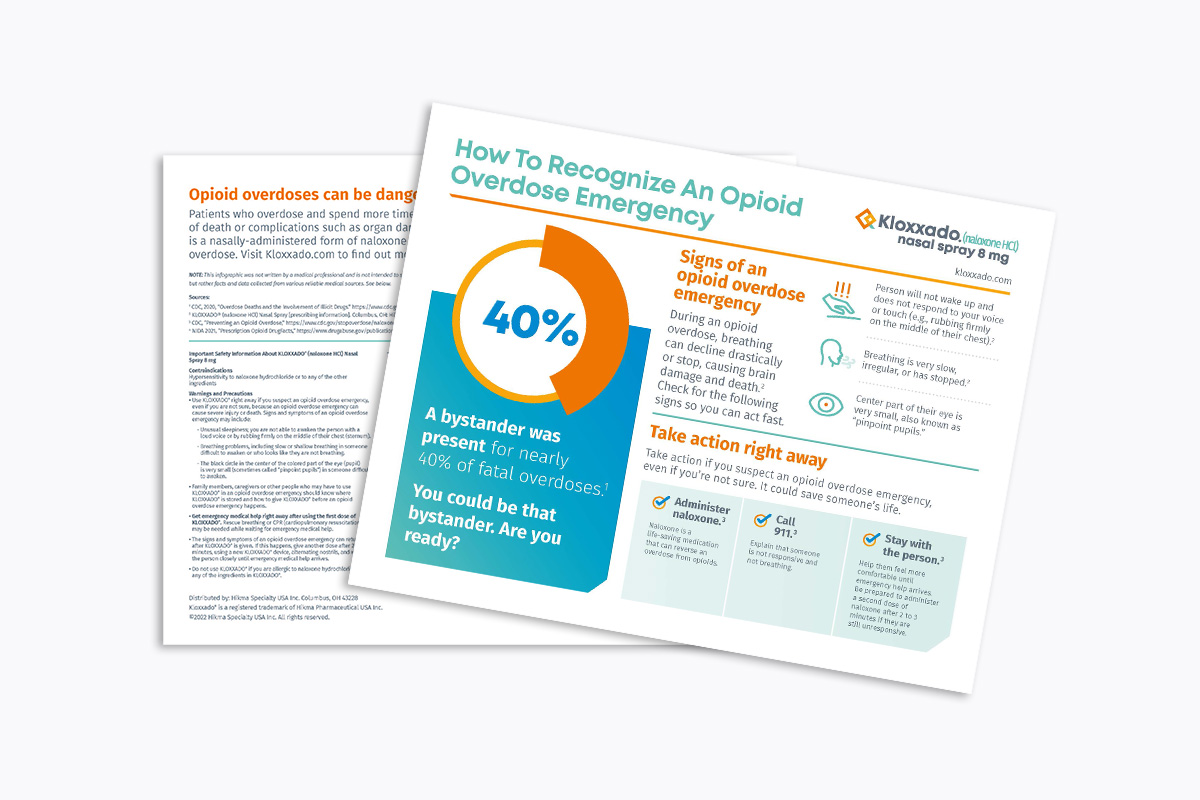
Here’s what to look for and what to do if you suspect an opioid overdose emergency.
References
- CDC, “Preventing an Opioid Overdose,” https://www.cdc.gov/drugoverdose/pdf/patients/preventing-an-opioid-overdose-tip-card-a.pdf, Accessed June 1, 2021.
- NIDA 2021, “Prescription Opioid DrugFacts,” https://www.drugabuse.gov/publications/drugfacts/prescription-opioids, Accessed June 1, 2021.
- HHS 2019. “Non-fatal opioid overdose and associated health outcomes,” https://aspe.hhs.gov/basic-report/non-fatal-opioid-overdose-and-associated-health-outcomes-final-summary-report, Accessed May 2021.
- National Safety Council, “Addressing the Opioid Crisis.” https://www.nsc.org/home-safety/safety-topics/opioids, Accessed May 3, 2021.
- KLOXXADO® (naloxone HCl) Nasal Spray [prescribing information]. Columbus, OH: Hikma Specialty USA Inc., 2021.
- CDC, 2020, “Overdose Deaths and the Involvement of Illicit Drugs.” https://www.cdc.gov/drugoverdose/featured-topics/VS-overdose-deaths-illicit-drugs.html, Accessed September 15, 2021.

